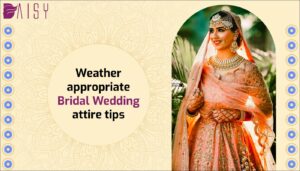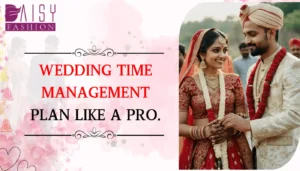Selecting coordinated attire for an Indian wedding is an intricate yet joyous endeavor that embodies tradition, cultural significance, and personal expression. Amidst the myriad colors, fabrics, and styles, certain truths and facts underpin this choice. Delving into these aspects illuminates the depth of cultural symbolism, regional nuances, and the beautiful amalgamation of tradition with modernity. When choosing coordinated attire for an Indian wedding with your partner, there are several truths or facts to consider:
Theme and Color Coordination:
Indian weddings often have specific color themes or motifs. Choosing coordinated attire that complements or matches the wedding’s theme can enhance the overall aesthetic appeal. Colors hold immense significance in Indian culture. Different colors represent various emotions, cultural beliefs, and aspects of life. For instance, red signifies prosperity and fertility, while gold symbolizes wealth and grandeur. Understanding these color meanings can help in selecting coordinated outfits that resonate with the occasion’s sentiments.
Traditional vs. Contemporary Styles:
Indian weddings can encompass a wide range of styles, from traditional to modern. It’s essential to decide whether you both prefer traditional attire like sarees, lehengas, or sherwanis, or opt for contemporary fusion wear that reflects your personal style. Daisy Fashion is here to give you a plethora of options in traditional and contemporary styles. Sit back and decide together on your D-day outfit
Fabric and Embellishments:
Pay attention to the fabric and embellishments used in your outfits. Some fabrics are more suitable for certain occasions or seasons. First decide on the bridal embellishment then you can easily work on the groom’s fabric and embellishment. You can also choose the groom’s outfit matching with the bride’s dupatta. Additionally, coordinating embellishments or embroidery can create a cohesive look. Personal expression in attire selection might involve customization, such as selecting unique embroidery, monograms, or fabric choices that reflect the couple’s story or shared interests.
Cultural Sensitivity:
Respect the cultural norms and customs associated with Indian weddings. Understand the significance of certain attire choices and ensure your coordinated outfits are appropriate for the event. Indian weddings are often steeped in cultural traditions and symbolism. Choosing attire that reflects these traditions can be a powerful way to honor the cultural heritage associated with the wedding ceremony.
Communication and Coordination:
Discuss preferences, colors, styles, and accessories with your partner to ensure both of you feel comfortable and confident in your chosen attire. Discuss preferences, colors, styles, and accessories with your partner to ensure both of you feel comfortable and confident in your chosen attire. Coordinating without compromising individual preferences is key.
Accessorizing:
Pay attention to accessories such as jewellery, footwear, and other adornments. Coordinated accessories can elevate the overall look and add finesse to your attire. While aiming for coordination, accessories allow room for personal expression. Partners can choose accessories that reflect their individual styles while still complimenting each other’s overall look. For instance, if one partner’s outfit is more elaborate, the accessories of the other partner can complement without overpowering, ensuring a well-balanced appearance.
Budget Considerations:
Indian wedding attire can vary significantly in price. Set a budget and explore options within that range to find outfits that suit both your preferences and financial plan. Indian wedding attire can range from modest to extravagant, and having a predefined budget ensures financial prudence. Having a budget in mind encourages exploration of diverse options within the defined financial limit. This search might lead to discovering unique outfits or cost-effective alternatives that align with the couple’s preferences.
Personal Expression:
While coordinating attire, don’t lose sight of expressing your individual styles. Harmonizing outfits doesn’t necessarily mean identical attire; it can also involve complementing colors or styles that reflect both of your personalities. Coordinated attire doesn’t mean sacrificing personal style. It allows both partners to express their individual tastes and preferences while ensuring a harmonious overall look. It might involve modernizing traditional attire or incorporating contemporary elements while staying true to their personal style.
Celebration of Togetherness:
Ultimately, choosing coordinated attire for an Indian wedding is a celebration of unity and togetherness. It symbolizes the union of two individuals coming together in love and respect for each other’s choices, beliefs, and traditions. Coordinated attire symbolizes the unity and bond shared between the couple. It signifies their commitment to walk through life together, sharing not only joys but also traditions, values, and experiences.
Conclusion:
Understanding these truths illuminates the depth of meaning behind the attire selection, guiding couples towards choices that resonate with their shared values, heritage, and personal styles. Daisy Fashion gives you a variety of options for choosing partner-coordinated attire for an Indian wedding that transcends fashion; it’s a celebration of love, unity, and the beautiful journey two individuals traverse together within the vibrant mosaic of their cultural traditions.













